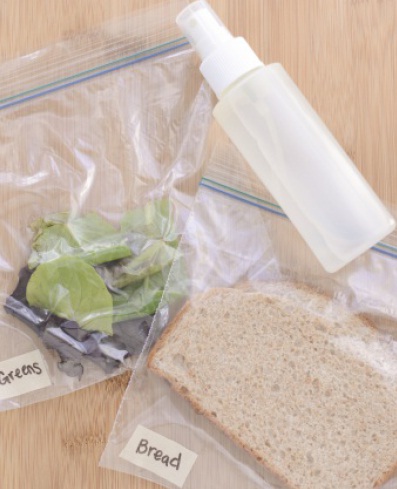





Published on Sep 12, 2023
Mold is a fungus that needs nutrients and water to grow. Mold can be found indoors and outdoors all over the world. Most are non-toxic, but they certainly aren't good to eat! Mold can grow on surfaces like rocks and walls, but in homes it commonly grows on aging food. Many foods, especially bread, contain mold inhibitors and preservatives to prevent mold from growing quickly.
Which food will grow the most mold? The least? Why?
Which environment has the greatest mold growth?

1. Plastic z ip-top bags
2. Knife
3. Labeling tape and marker
4. Two or three types of food (such as greens, bread, meat, cheese, fruit, etc.)
5. Notebook and pen or pencil
6. Spray bottle
7. Water
8. Cooking pan, toaster oven, oven or other cooking device.
9. Camera (optional)
1. Select some different foods to test.
2. Have an adult help you cut your samples. You will need 9 samples for each type of food.
3. Take 3 samples of each type of food and cook them. How might this condition affect how mold grows on the food?
4 . Place each sample into a plastic z ip-top bag and seal it. Label each bag appropriately with type of food, the conditions, and environment.
5. Take 3 samples of each type of food and spray lightly with water. Do you think the wet samples will grow mold more quickly or slowly? Why?
6. Place each sample into a plastic z ip-top bag and seal it. Label each bag appropriately with type of food, the conditions, and environment.
7. Take the last 3 samples and place each sample into a plastic z ip-top bag and seal it. Label each bag appropriately with type of food and environment.
8. Place one cooked, one wet, and one dry set of samples for each type of food in the refrigerator.
9. Place one cooked, one wet, and one dry set of samples for each type of food in a dark place like a cupboard.
10. Place one cooked, one wet, and one dry set of samples for each type of food outside in a sunny, warm spot.
11. Monitor your samples daily and make notes on observations. Taking pictures is a great way to track changes in your samples over time.
Wet samples will grow the most mold, while cooked samples will grow the least mold. Samples left in the sun will grow the most mold, while refrigerated samples will grow the least mold.
Molds need water and nutrients to grow, so wet, uncooked samples will provide the most nourishment to many types of molds. Cooking food often denat ures (destroys) many proteins and nutrients in food and makes it harder for mold to use the nutrients for growth. Mold also thrives in warm environments, so the samples left in the sun will mold first. Refrigeration prevents cell activity in many living things like fungi and bacteria, which is why foods typically last longer in the refrigerator. We may not want to eat mold, but mold can be very useful! Many kinds of mold are used to produce life-saving medicines, or clean up toxic oil spills. They are great for many biological and engineering purposes because they are simple and reproduce quickly.
Wikipedia article on microwaves